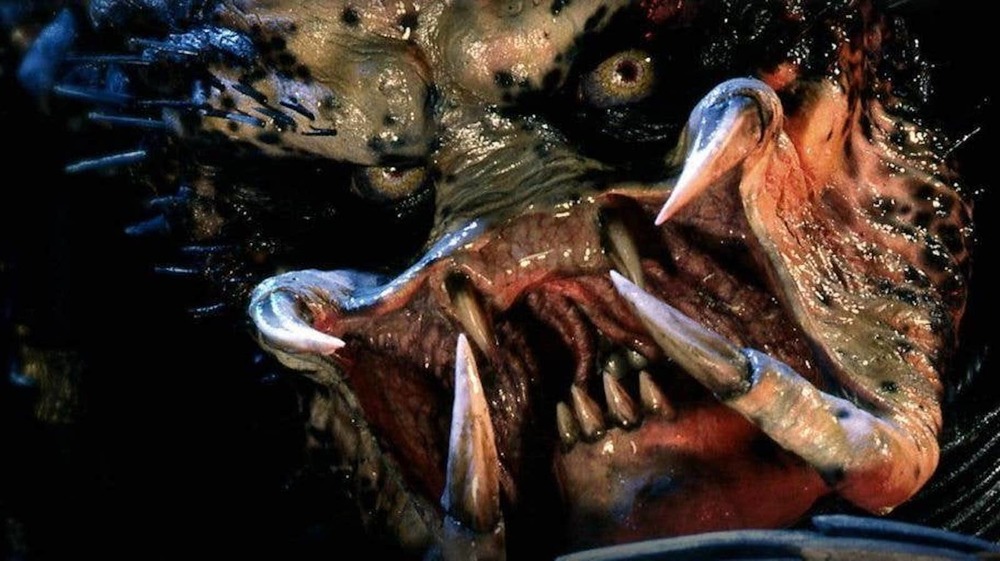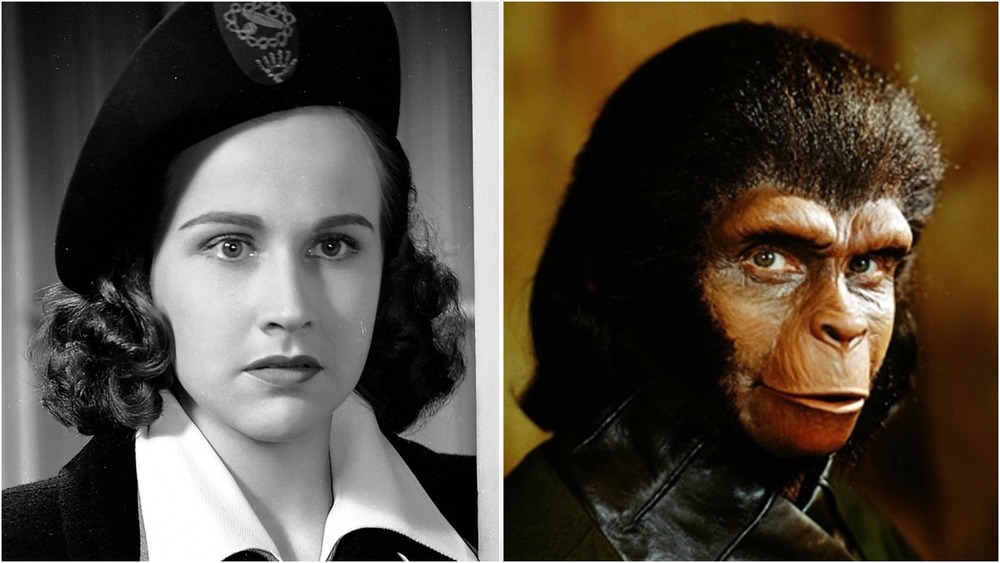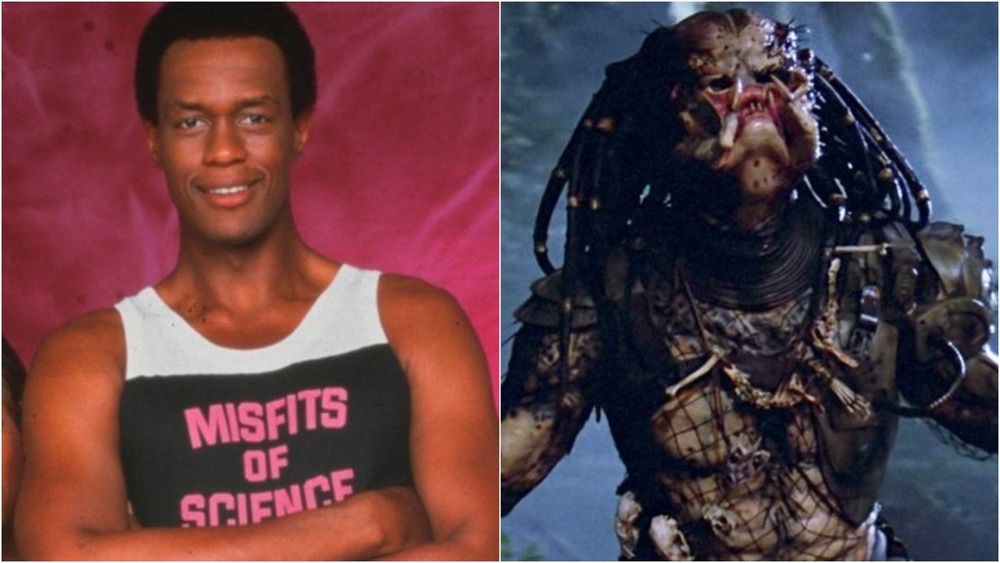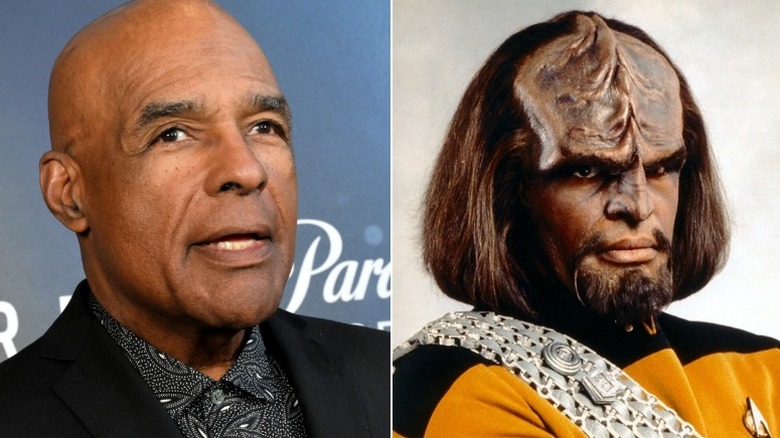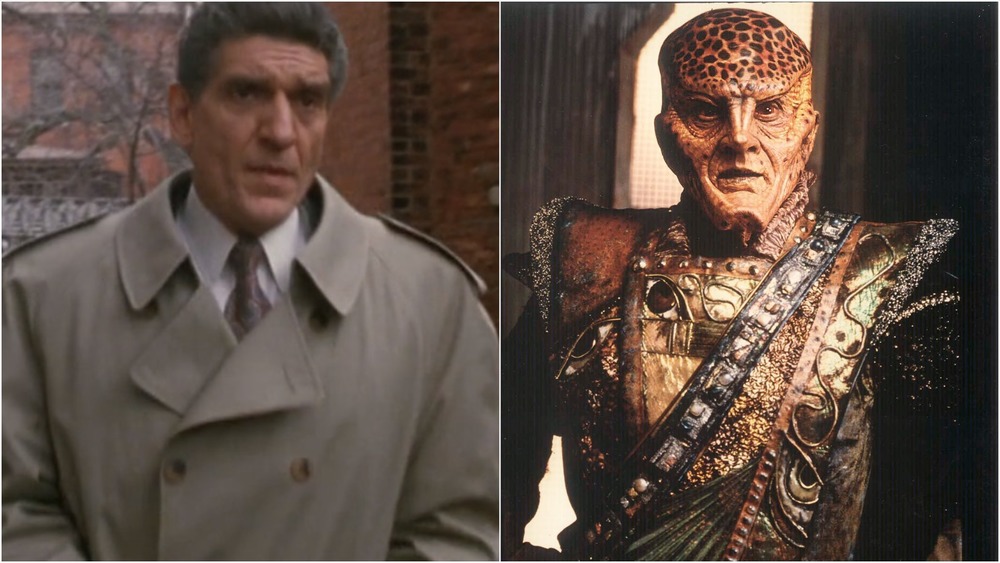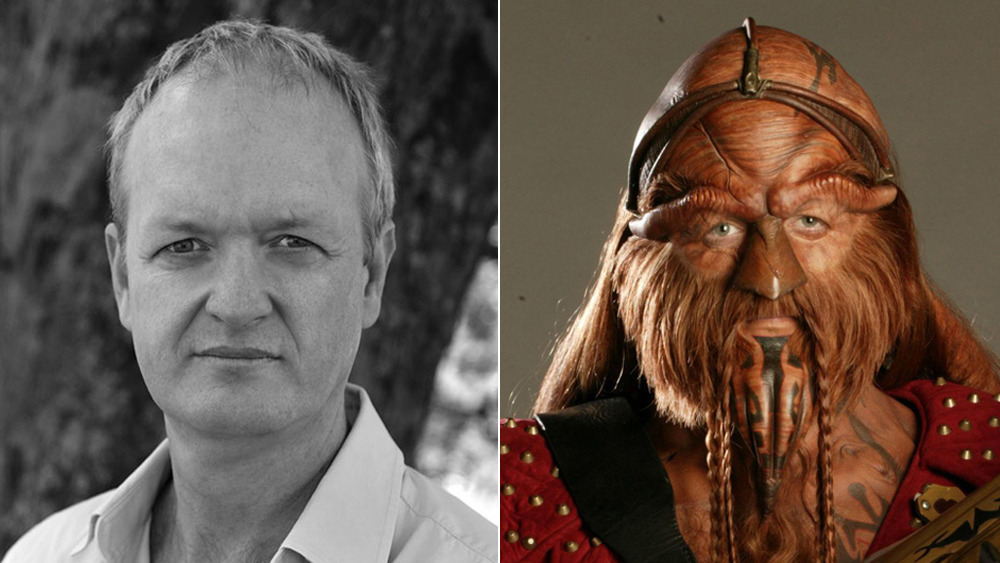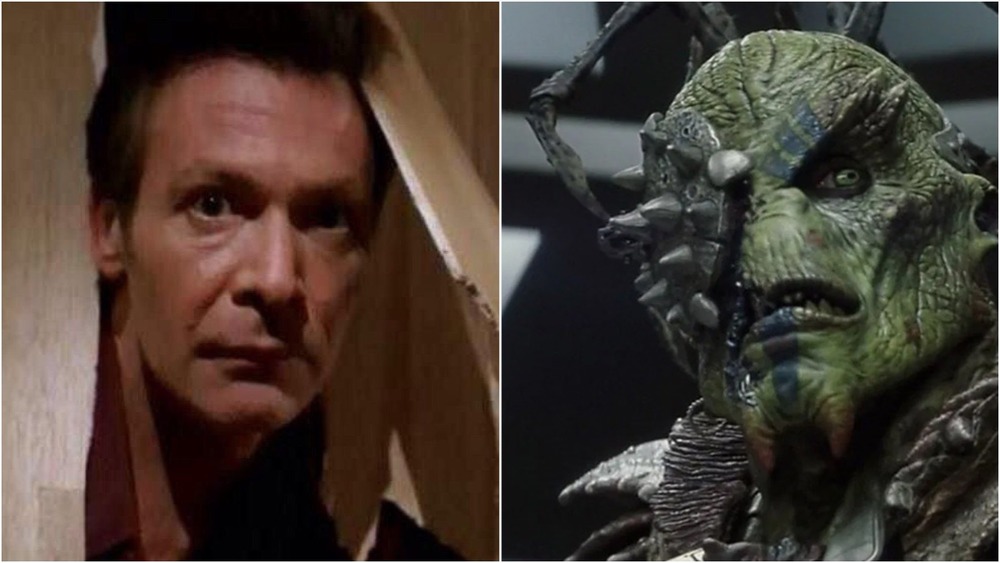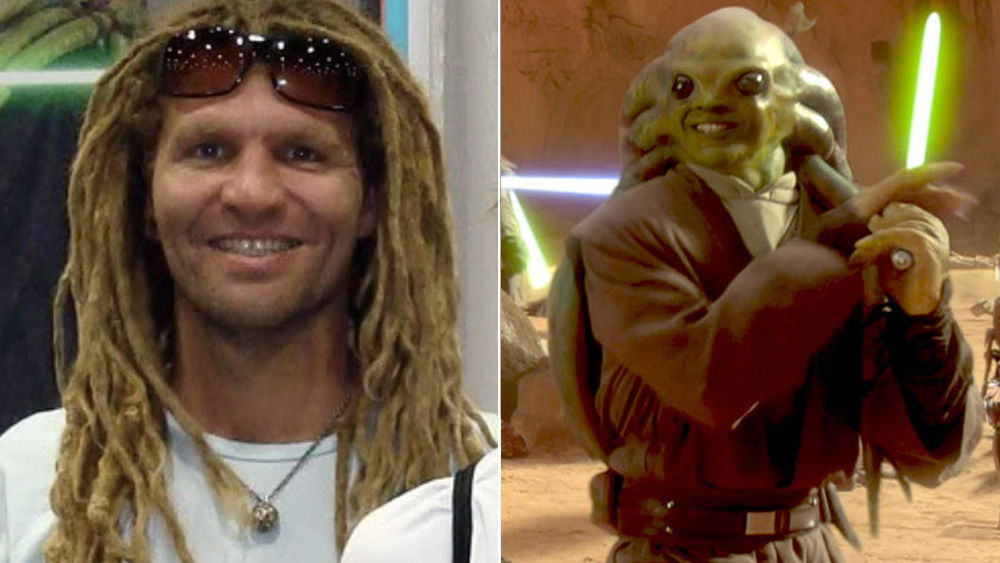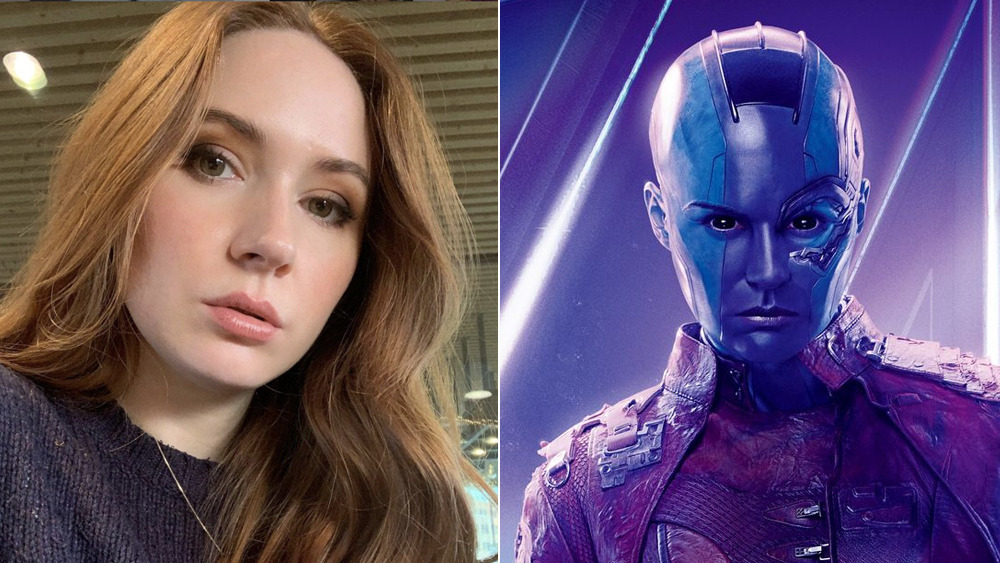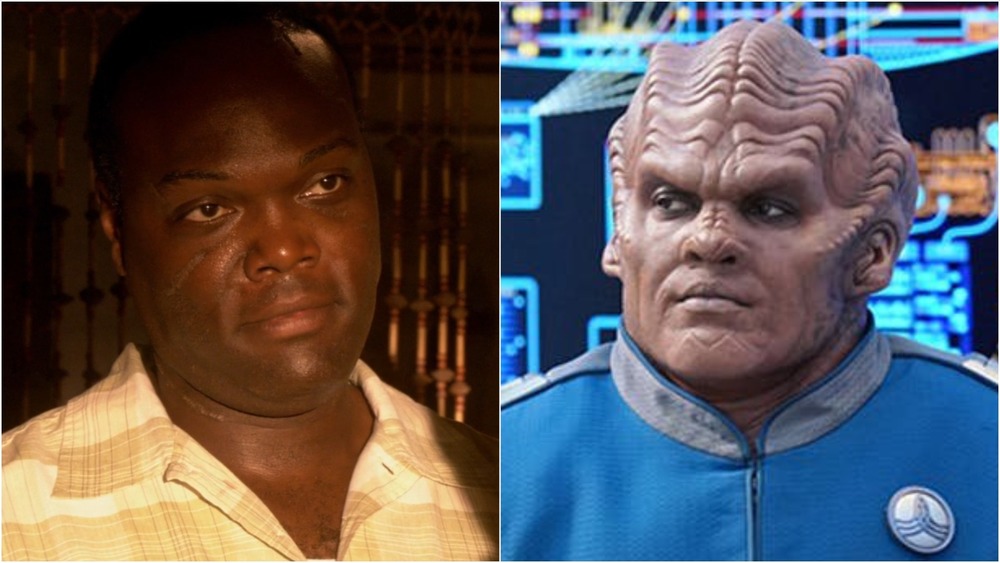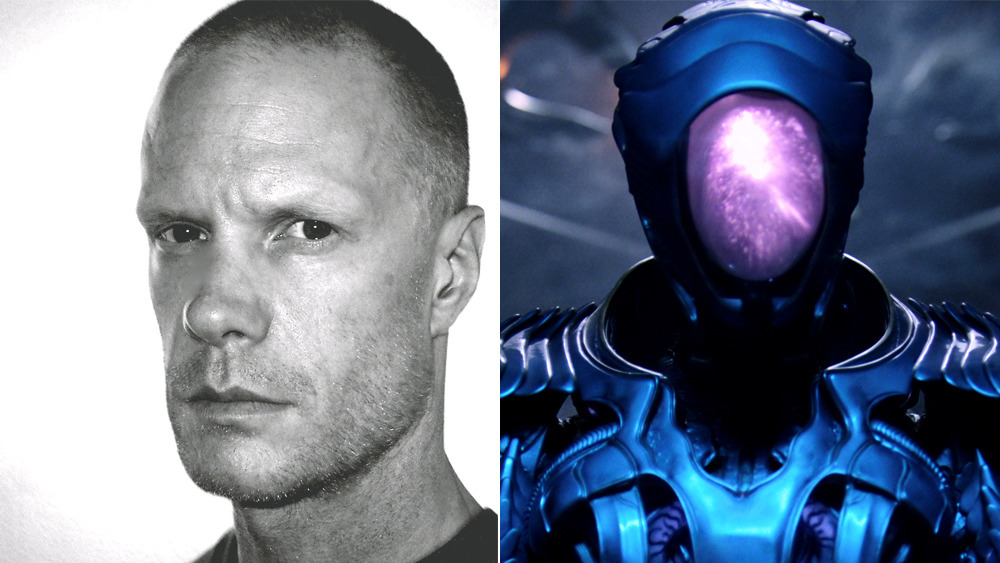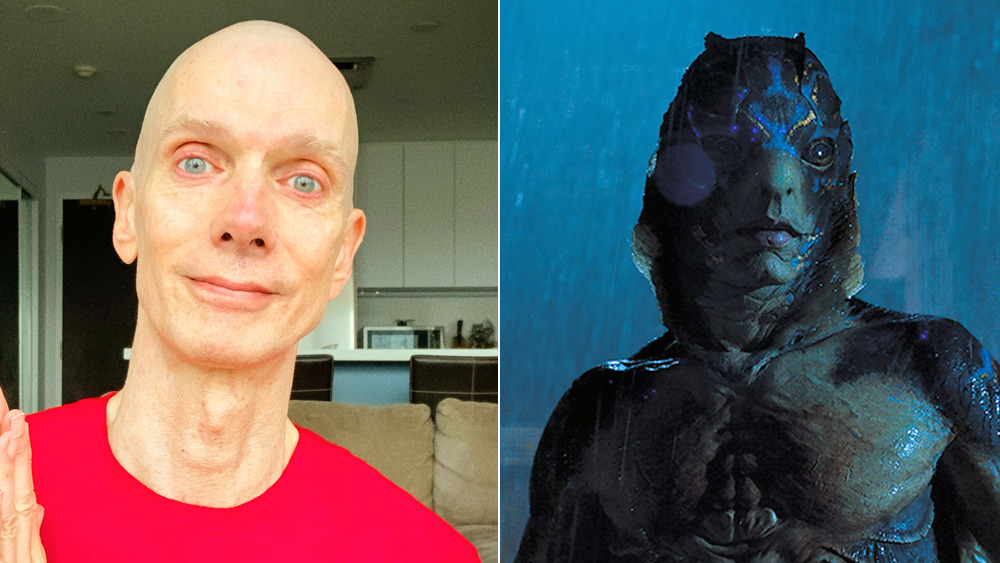What These Sci-Fi Actors Look Like Without Makeup
We may receive a commission on purchases made from links.
Since the birth of cinema, filmmakers have been transporting audiences to other worlds populated by alien life forms. While today, advancements in computer graphics allow for aliens or creatures to take any form one could imagine, traditionally they've been brought to life using complex special makeup effects. Makeup effects have advanced dramatically over the decades, from flimsy rubber masks to intricate, multi-piece applications that can even involve electronics, and continue to hold up against more expensive computer-driven effects.
Creating a convincingly alien sci-fi character requires an actor who's able to convey a performance while sacrificing many of the tools on which they usually rely. These actors sit still through hours of additional time in the makeup chair having custom applications glued to and peeled from their skin, while also sacrificing the glory of being recognized onscreen. Actors who thrive in one heavy makeup role are often asked to do it again and again, meaning some rarely appear onscreen without a foam rubber application over their face, but they — and the artists who transform them — deserve a curtain call at least as much as their outwardly human co-stars.
Kim Hunter (Dr. Zira, Planet of the Apes)
While not terribly convincing compared to the CGI motion-capture apes from the 21st century remakes, the makeup effects for the original Planet of the Apes were so revolutionary in 1968 that a special Academy Award had to be invented to honor artist John Chambers for the achievement. The methods invented for creating, applying, and removing complex prosthetics from actors' faces in Planet of the Apes would form the foundation for special makeup effects for the next half-century. It's such a landmark in the business that there's an entire full-length documentary dedicated just to the makeup effects on Planet of the Apes and the people who developed them.
Dozens of actors donned the ape prosthetics in the film, but chief among them was Kim Hunter as the chimpanzee scientist Dr. Zira. Hunter is barely recognizable in the makeup, but prior to becoming Zira for three Planet of the Apes films, she had already won an Oscar for her portrayal of Stella in the 1958 classic A Streetcar Named Desire. Hunter was fascinated by the script to Planet of the Apes and signed on to perform Zira before she had any idea how involved the makeup process was going to be. (Granted, no one knew, because the process was still being invented.) The first test application took five hours, and Hunter and her co-star Roddy McDowall had to figure out how to speak clearly though the application so they could teach the rest of the cast.
Kevin Peter Hall (The Predator, Predator)
Actor Kevin Peter Hall's impressive height — over seven feet — made him a shoo-in for roles as aliens and monsters in Hollywood productions. Hall came aboard the 1987 film Predator midway through production, replacing Jean-Claude Van Damme, when the design of the alien hunter changed to require an actor who could loom over Arnold Schwarzenegger. That same summer, Hall had already been introduced to film audiences under heavy makeup as the Sasquatch Harry in the hit comedy Harry and the Hendersons, a role he would later reprise for television. Both the roles of Harry and the Predator required that Hall wear a heavy mechanical head with animatronic features, each made by a legend in makeup effects — Rick Baker and Stan Winston, respectively. Hall trained rigorously for strength and endurance with his bodybuilder co-star for the daunting task of filming brutal fight scenes while under heavy, full-body makeup and armor and carrying prop weapons.
When interviewed by Entertainment Tonight in 1987, Hall was grateful for the exciting, high-profile roles, but hoped that there would be more opportunities for him to be recognized onscreen without makeup. While he did score some out-of-makeup television roles, Hall never got the opportunity to become a familiar face on film — he died in 1991 at the tragically young age of 35.
His legacy lives on in the Predator, who he performed in both Predator and 1990's Predator 2, and continues to be one of science fiction's most iconic aliens.
Michael Dorn (Worf, Star Trek: The Next Generation/Deep Space Nine)
Star Trek's Klingons are among the most recognizable aliens in all of science fiction, though there have been many different looks for the Klingons over the course of the past 50 years. In the late 1960s, before the kinds of makeup applications developed for Planet of the Apes could be employed on a television budget, Klingon makeup was just some phony facial hair and a liberal quantity of brown makeup onto caucasian actors. (Yikes.) When Star Trek made the jump to the big screen for The Motion Picture in 1978, costume designer Robert Fletcher reimagined the Klingons as significantly more alien, and their design continued to evolve over the following films.
When Trek returned to television in 1986, Michael Dorn was cast as the Klingon Lt. Worf, a supporting role that gradually became one of the most significant characters in the franchise. Between Star Trek: The Next Generation, Star Trek: Deep Space Nine, and four feature films, Dorn made 274 appearances as Worf, making him by far the most prolific actor in franchise history. Worf's makeup, like the rest of Star Trek's aliens during the '80s and '90s, was created by industry legend Michael Westmore, and took just over two hours to apply.
Dorn has appeared out of makeup onscreen very rarely since playing Worf, primarily working as a voice actor and in live theater, though his human face could occasionally be seen on Castle.
Andreas Katsulas (G'Kar, Babylon 5)
Outside of science fiction, the late character actor Andreas Katsulas is most recognized as "the one-armed man" in the 1993 film The Fugitive, but his most celebrated roles were performed from beneath foam rubber prosthetics. In November of 1989, Katsulas appeared under alien makeup appliances on two different sci-fi television series, as Koulak Scarhand on Alien Nation and as Romulan Commander Tomalak on Star Trek: The Next Generation, which would become a recurring role. But these guest starring appearances were just a precursor a much larger role with much more involved makeup.
Katsulas is most famous for portraying the Narn revolutionary and diplomat G'Kar on Babylon 5, who he performed across five seasons and multiple TV movies. Babylon 5's makeup and creature effects were designed by Jon Vulick and Optic Nerve Studios, but the design of the Narns was inherited and adapted from the pilot movie, where the special makeup effects supervisor was John Criswell.
Katsulas was typically not needed in makeup for an entire shooting week, but on the rare occasion that he needed to wear his prosthetic for several consecutive days, it was brutal on his skin. This didn't seem to embitter Katsulas against the process, however, as he found it helped him to get fully into character very quickly. Regarding spending five years playing the role, Katsulas once said, "I sometimes had the sense that if I were to peel off my skin, G'Kar would be underneath it."
Anthony Simcoe (Ka D'Argo, Farscape)
Actor Anthony Simcoe is a lifelong science fiction fan who performed the role of Ka D'Argo on the Australian/American sci-fi series Farscape. Of all the actors portraying aliens as part of the regular cast of Farscape, Simcoe's makeup was the most dramatic, with a prosthetic forehead, nose, chin, and facial hair obscuring most of his face. Even with all that makeup, he's still not the most otherworldly creature aboard the living spaceship Moya, thanks to the presence of Jim Henson Studio puppets on set.
Simcoe "absolutely loved" wearing the makeup, which took four hours to apply at first and later got refined down to a 90-minute process. Simcoe feels that his performance became more loose and natural as the makeup process improved. He's quoted as saying that often, actors wearing heavy prosthetics give stiff performances, and admits that this happened to him in some episodes of Farscape as well, but that he's very pleased when he can overcome it.
The makeup did present one more stubborn obstacle for Simcoe — it was really, really hot, and thanks to the schedule demands of the Sci-Fi Network up in the northern hemisphere, Farscape had to be shot during Australia's summer. Simcoe recalls waiting for his turn on camera wearing only his full makeup and a pair of boxer shorts just to bear the heat. Costumers would get him dressed for his shots and then quickly undressed so he wouldn't be roasted alive.
Robin Sachs (Sarris, Galaxy Quest)
One can easily be forgiven for not knowing that General Sarris, the reptilian villain of Galaxy Quest, is portrayed by Robin Sachs, best known as Giles' nemesis Ethan Rayne on Buffy the Vampire Slayer. Even to those who are familiar with his other screen work, Sachs is totally unrecognizable under his Galaxy Quest makeup. Sachs' voice is also distorted for the role, which makes it even less likely that anyone could guess who's under Sarris's scaly skin. Building the mystery even further, Sachs himself gave only a very brief interview for the promotional making-of featurette "On Location In Space" — which he conducted in full costume and makeup. He even goes entirely unmentioned in the loving 20th anniversary documentary Never Surrender: The Making of Galaxy Quest.
In the documentary, visual effects supervisor Bill George refers to the special effects as "the straight man" of the comedy, and the same goes for the makeup effects. All of the otherworldly elements of the story had to be depicted as realistically as in a sci-fi drama in order to serve the conceit of the film, which is why ILM and Stan Winston Studios were brought in to do the visual and makeup effects, respectively — the same experts you'd bring in for a played-straight sci-fi adventure. The makeup and costume effects for Sarris are quite elaborate and hold up pretty well two decades later, even if they look a bit like Ninja Turtles.
Zachariah Jensen (Kit Fisto, Star Wars)
Nautolan Jedi Knight Kit Fisto is one of the best-remembered bit players in the Star Wars prequels, making his debut in the climactic Battle of Geonosis in Attack of the Clones and falling in battle to Darth Sidious in Revenge of the Sith. But as popular as he is, few fans have noticed that he's actually played by multiple performers over the course of his two live-action film appearances: actor Zac Jensen, stuntman Ben Cooke, and — very briefly — ILM visual effects artist Daniel Zizmor.
Kit Fisto was originally designed by concept artist Dermott Power as a potential villain for Attack of the Clones, but was eventually retooled into a heroic background Jedi instead. After Jensen was cast in the role, a mask was made from a mold of his face and then applied to his head — along with Fisto's trademark tentacle-dreadlocks — over the course of four hours. Jensen describes the elaborate costume and makeup process being intense, but since it was one of his first major film roles, it was much more exiting than frustrating. Daniel Zizmor would later put on Jensen's makeup and costume for a quick visual effects shot of Kit Fisto disembarking from a Republic gunship. For Revenge of the Sith, Hayden Christensen's stunt double Ben Cooke took over the role, as Jensen was busy on location as part of the production crew for the reality show Survivor.
Karen Gillan (Nebula, Guardians of the Galaxy)
Karen Gillan is familiar to plenty of sci-fi fans as Amy Pond on Doctor Who, but Gillan underwent a dramatic transformation to portray the alien cyborg Nebula in the Marvel Cinematic Universe. For her first appearance as the character in 2014's Guardians of the Galaxy, Gillan fully shaved her head, as she dramatically revealed to a captivated Hall H audience at 2013's San Diego Comic-Con. That was the easy part, as Gillan had to report to set as early as 2AM to begin the five-hour makeup process for the first Guardians film, which included not only glueing and airbrushing prosthetics on her skin but also putting in massive black contact lenses. (The process has since been refined for the sequels to take about half the time.)
Like so many actors before her who have endured long, early mornings in the makeup chair, just sitting still was "a challenge within itself." Gillan had to find ways to pass the time, such as watching movies on her iPad, learning meditation, chatting with the makeup artists, or just plain taking a nap. Once applied, though, Gillan found that the stiff, restricting makeup helped her to find her character.
Nebula's makeup was designed for the screen by concept artist Andy Park (based on her comics appearances) and brought to life by veteran Marvel Studios special makeup effects designer David White.
Peter Macon (Bortus, The Orville)
Seth MacFarlane's Star Trek pastiche The Orville has its share of big bumpy forehead aliens, principally Bortus, a Moclan officer aboard the titular vessel. Actor Peter Macon dons a three-piece foam rubber application for the role, which takes about three hours to apply each time. Macon was well-prepared for acting through heavy makeup — during his studies at the Yale School of Drama, Macon trained for two years in clowning and mask work. Learning to convey his character with limited tools of expression is one challenge — another is acting when your makeup appliance totally covers your ears, blocking about 30% of your hearing.
"I've gotten really good at lip-reading," said Macon at a film festival interview.
Macon can be seen out of makeup on episodes of Dexter, Shameless, Bosch, and many other television series in guest roles.
Bortus's makeup design is attributed to Garrett Immel, who has two Emmy wins and six nominations for his prosthetics work on The Walking Dead, plus an additional nomination for an episode of Star Trek: Enterprise, foreshadowing his involvement in MacFarlane's tribute series. Immel finished the Moclan makeup based on preliminary designs by The Orville's Makeup Department Head, Howard Berger.
Brian Steele (The Robot, Lost in Space)
On the Netflix reboot of the classic 1960s sci-fi series Lost in Space, the once silly and non-threatening Robot is now a bizarre, intimidating alien entity. Rather than using a fully computer-generated character, The Robot is performed on set by Brian Steele, a "creature actor" who specializes in monsters, aliens, and machines. Over the years, he's been a Terminator, a Predator, and a wide variety of supernatural creatures under heavy makeup, which has earned him the affectionate industry nickname "CreatureBoy." So while the Robot isn't exactly a "makeup" role, Steele has more than earned a place on this list and deserves some recognition.
Steele's complex costume was developed by the practical effects studio Spectral Motion, and is constructed from a foam latex bodysuit covered in individual fiberglass components. Unlike the other aliens on this list, the Robot's face is totally obscured, and the costume is designed to make the audience question whether he's even an actor in a suit rather than a visual effect. In the first season of the show, Steele performs the Robot in 85% of shots, with only the remaining 15% being digital effects. Steele also performs the other alien robots that appear in the second season, which have their own distinct movements.
Doug Jones (The Amphibian Man, The Shape of Water)
Actor and mime Doug Jones has appeared under heavy makeup for almost his entire career, beginning with the unsettling McDonalds mascot Mac Tonight. From Hocus Pocus to Buffy to The Strain, Jones is arguably the most ubiquitous "makeup performer" in Hollywood today. While also very well known for his previous collaborations with director Guillermo del Toro as Abe Sapien in the Hellboy films and both the Faun and the Pale Man in Pan's Labyrinth, the pinnacle of Jones' costumed career so far must be his performance as the Amphibian Man in del Toro's The Shape of Water, which won the Academy Award for Best Picture.
Remarkably, the costume and makeup process for The Shape of Water was a mere three hours thanks to the skilled artists at Legacy Effects. Because the Amphibian Man had to interact so much with water, adhesives were impractical, so Jones actually had to be sewn into his costume for each day of filming.
After decades performing as a variety of bizarre creatures, Jones was ready to finally "hang up his rubber bits" before he was approached to star in Star Trek: Discovery as Saru in 2016, where brand new alien makeup was designed for him. Ironically, Discovery later offered Jones a brief opportunity to play his character out of makeup when Saru temporarily appeared as human for a two-episode arc, giving viewers a rare glimpse of Doug Jones' real human face in outer space.
